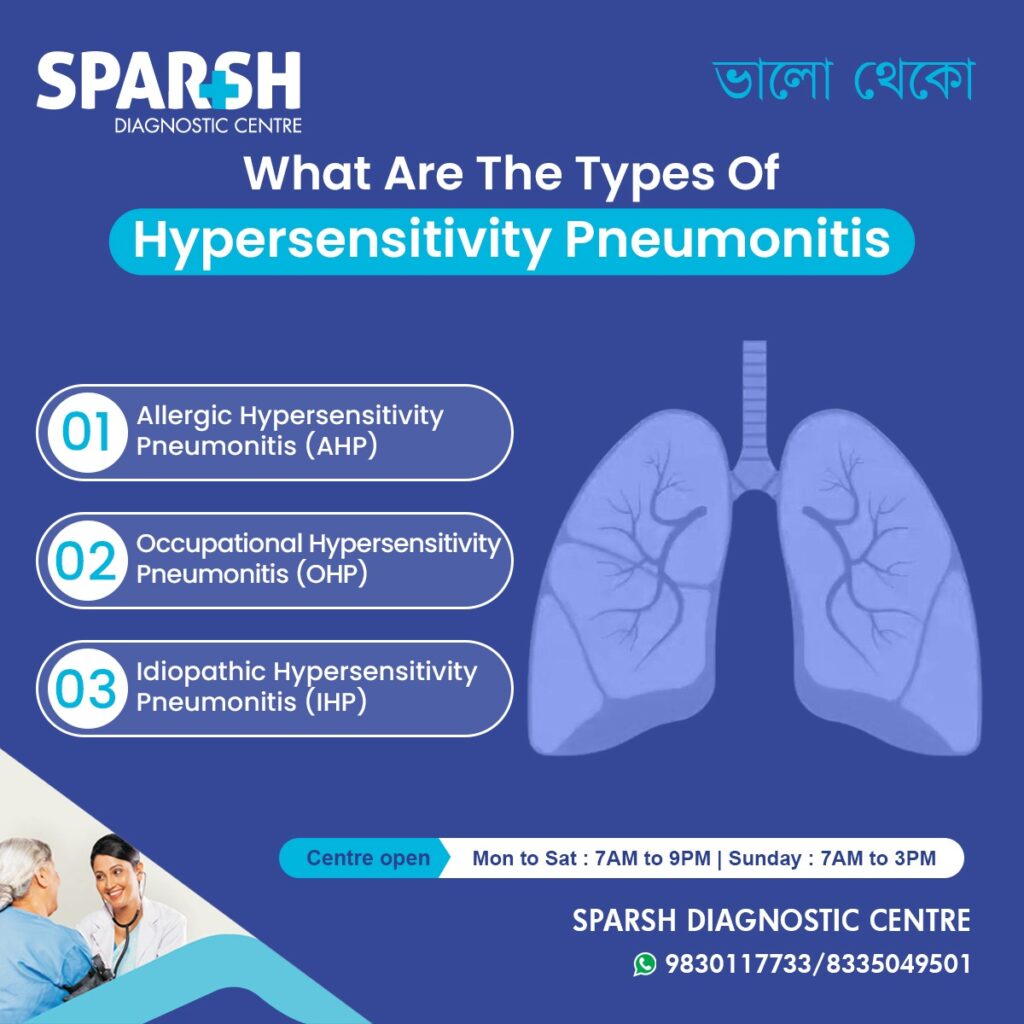Hypersensitivity pneumonitis (HP) is a complex inflammatory condition of the lungs that occurs as a response to repeated exposure to environmental antigens. Often affecting individuals in both occupational and domestic settings, HP presents a spectrum of symptoms and clinical patterns that can vary depending on the type, severity, and duration of exposure.
Understanding Hypersensitivity Pneumonitis
HP, also known as extrinsic allergic alveolitis, is an immune-mediated lung disease caused by inhaling organic dust, molds, or certain chemicals. These substances trigger an immune reaction in susceptible individuals, leading to inflammation of the alveoli and small airways.
The disease can be classified into acute, subacute, and chronic forms, based on the timeline and severity of symptoms.
Common Causes of Hypersensitivity Pneumonitis
The antigens responsible for HP vary widely, depending on the environment. Here are some of the most common sources:
- Organic Dust: Found in workplaces like farms, sawmills, or factories.
- Fungi and Molds: Commonly associated with water-damaged buildings or air conditioning systems.
- Animal Proteins: Found in bird droppings and feathers, often causing “bird fancier’s lung.”
- Chemicals: Certain occupational chemicals used in industries such as plastics and paints.
Types of Hypersensitivity Pneumonitis
HP can be broadly categorized into the following types based on its cause and clinical context:
- Acute Hypersensitivity Pneumonitis (AHP):
- Sudden onset of symptoms such as fever, chills, cough, and breathlessness.
- Typically occurs after heavy exposure to antigens over a short period.
- Occupational Hypersensitivity Pneumonitis (OHP):
- Caused by repeated exposure to specific antigens in occupational settings.
- Common in industries like farming, woodworking, or metalworking.
- Idiopathic Hypersensitivity Pneumonitis (IHP):
- Occurs when the trigger antigen cannot be identified.
- Often presents as chronic HP, with progressive symptoms and lung fibrosis.

Other subtypes include:
- Farmer’s Lung: Associated with moldy hay or crops.
- Bird Fancier’s Lung: Caused by exposure to bird droppings or feathers.
- Humidifier Fever: Due to contaminated humidifiers or air conditioning systems.
- Chemical Worker’s Lung: Resulting from exposure to certain occupational chemicals.
Hypersensitivity Pneumonitis symptoms
Symptoms of HP can range from mild to severe and may manifest differently based on the disease’s progression:
Acute HP:
- Sudden onset of fever, chills, and cough.
- Shortness of breath.
- Fatigue and muscle aches.
Subacute HP:
- Gradual development of cough and breathlessness.
- Fatigue and weight loss.
- Symptoms may persist for weeks to months.
Chronic HP:
- Progressive shortness of breath.
- Persistent cough.
- Signs of lung scarring (fibrosis).
Diagnosing Hypersensitivity Pneumonitis
Timely diagnosis is critical to preventing long-term damage. The following diagnostic steps are typically undertaken:
- Medical History and Exposure Assessment: Understanding the patient’s occupational or environmental exposure.
- Physical Examination: Listening for abnormal lung sounds (crackles).
- Imaging Tests: High-resolution CT scans are preferred for detecting lung changes like ground-glass opacities or fibrosis.
- Pulmonary Function Tests (PFTs): To assess lung capacity and function.
- Blood Tests: To detect antibodies against specific antigens.
- Bronchoalveolar Lavage (BAL): To analyze inflammatory cells in the lungs.
- Lung Biopsy: In complex cases, a biopsy may be necessary.
Hypersensitivity Pneumonitis treatment
The treatment approach for HP typically includes:
- Avoidance of Antigen Exposure:
- Identify and eliminate the environmental trigger.
- Use protective equipment like masks and respirators.
- Medications:
- Corticosteroids: Such as prednisone, to reduce inflammation.
- Immunosuppressive Drugs: In cases of chronic HP or steroid resistance.
- Supportive Therapies:
- Oxygen therapy for patients with advanced disease.
- Pulmonary rehabilitation to improve lung function and quality of life.
- Lifestyle Adjustments:
- Smoking cessation, as smoking can exacerbate symptoms.
- Maintaining a clean and well-ventilated living or working space.
Complications of Hypersensitivity Pneumonitis
If left untreated, HP can lead to several complications, including:
- Lung Fibrosis: Irreversible scarring of the lungs, leading to long-term respiratory issues.
- Chronic Respiratory Failure: Due to progressive lung damage.
- Cor Pulmonale: Right-sided heart failure caused by chronic lung disease.
Preventing Hypersensitivity Pneumonitis
Prevention is key to reducing the risk of HP. Some measures include:
- Regular Maintenance: Clean and maintain humidifiers, air conditioning systems, and other potential sources of antigens.
- Protective Equipment: Use appropriate respiratory protection in occupational settings.
- Environmental Controls: Improve ventilation and reduce exposure to dust and mold.
- Education and Awareness: Educate individuals about the risks and symptoms of HP.
Living with Hypersensitivity Pneumonitis
For patients diagnosed with HP, managing the condition involves a multidisciplinary approach:
- Regular Monitoring: Routine follow-ups with a pulmonologist.
- Support Groups: Joining support networks for individuals with chronic lung diseases.
- Diet and Exercise: Maintaining overall health through balanced nutrition and moderate exercise.
Hypersensitivity pneumonitis is a potentially serious condition that requires prompt recognition and management. By understanding the causes, symptoms, and treatment options, individuals can take proactive steps to mitigate risks and improve outcomes. With proper care and lifestyle adjustments, patients with HP can lead a better quality of life.
To consult a Pulmonologist/Chest Specialist at Sparsh Diagnostic Centre, call our helpline number 9830117733.
#BhaloTheko
Disclaimer:
No content on this site, regardless of date, should ever be used as a substitute for direct medical advice from your doctor or other qualified clinician.

![]()






[…] Hypersensitivity Pneumonitis: Caused by an allergic reaction to environmental exposures. […]
I am interesting for that field.